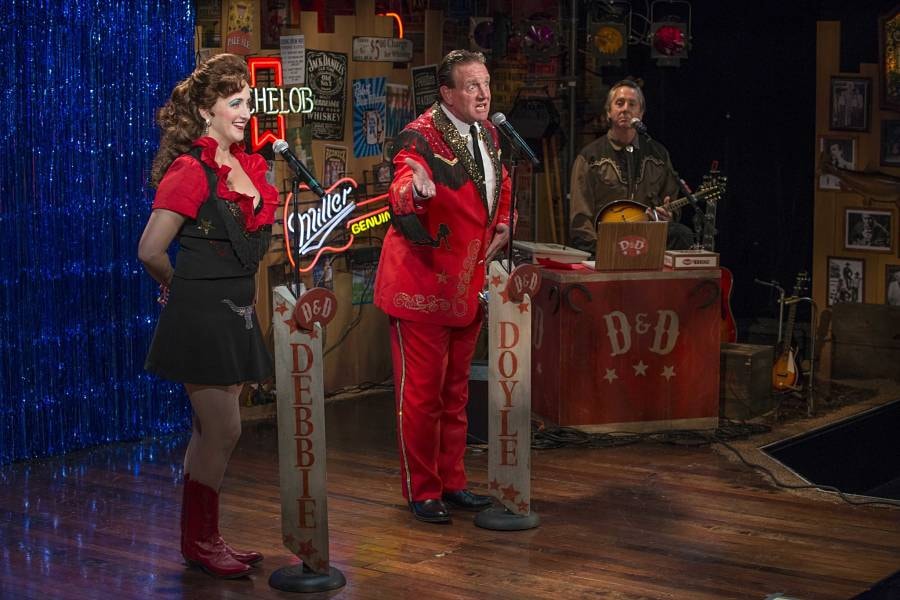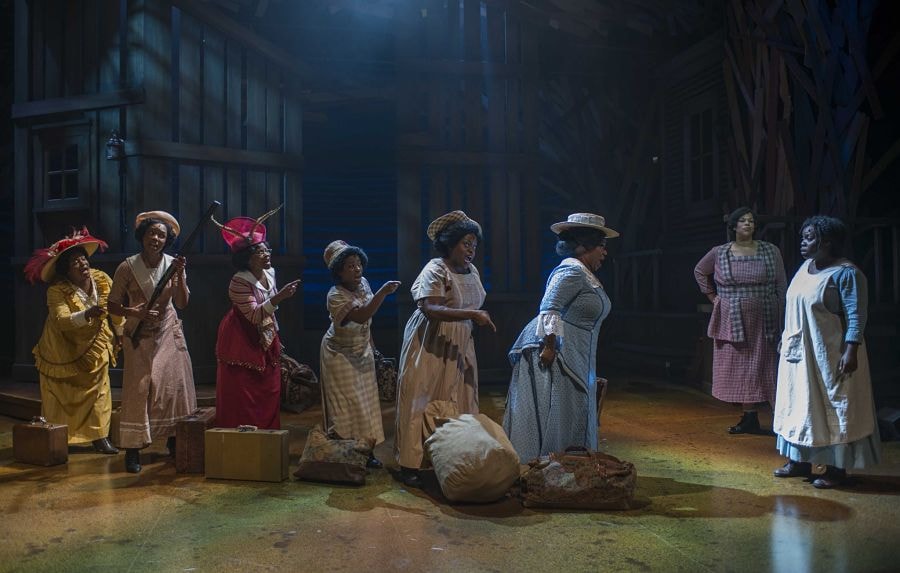MILWAUKEE: You might think of this former French-Canadian outpost as the beertown home of Laverne & Shirley, but it could just as well claim the title as the other great theatre town on Lake Michigan (it even has its own improv tradition to rival Chicago’s: ComedySportz was born here). It’s never lacked for performing arts institutions, and at the top of the heap is Milwaukee Rep, a multivenue company overlooking the Milwaukee River in arts-rich East Town. Artistic director Mark Clements talks about the aesthetic and institutional responsibilities of running Wisconsin’s biggest theatre.
Who founded Milwaukee Rep, when, and why?
In 1954, Mary Widrig John forged a plan to build a professional theatre for Milwaukee. She wanted to create a top-notch professional theatre in her hometown and thought, “The only way to do it, as a woman in those days, was not to climb the ladder but to start at the top.” Mary gathered the support of many prominent members of the community and converted an old movie theatre into an arena-style theatre, naming it the Fred Miller Theater, after the president of the Miller Brewery who chaired the fundraising campaign for the theatre. With most of the cultural events in Milwaukee coming through as touring productions, the founding of this company not only created a professional company in this city, but also acted as an incubator for a community of theatre artists based in Milwaukee, a vibrant community that still exists today.

Tell us about yourself and your connection to the theatre.
I’m originally from the U.K. but had been working in the U.S. for some time when I was invited to visit Milwaukee and interview for the artistic director position at Milwaukee Rep. It reminded me of the National Theatre in London, with numerous spaces and the ability to produce a wide variety of work, and I immediately fell in love with its legacy, potential, and ability to create a lot of eclectic art and serve a wide variety of people. I am now in my fifth season here.
What sets your theatre apart from others in your region?
We are the largest not-for-profit producing theatre in Wisconsin. Our three unique spaces—a 720-seat thrust, a 205-seat, multi-configurational black box, and a 124-seat cabaret space—all in the same building, along with an annual production of A Christmas Carol in the historic 1,200-seat adjacent Pabst Theater, allow us to create and produce a wide variety of work.
Tell us about your favorite theatre institution other than your own, and why you admire it.
There are many wonderful arts organizations around the world that I draw huge creative inspiration from, but the National Theatre in London has always been a benchmark of theatrical excellence for me. Here in the States, I admire many companies, but the breadth, quality, and scale of work on offer at Oregon Shakes is always a pleasure to behold, as is the way that Diane Paulus has created a whole new audience vibe at ART in Boston.
How do you pick the plays you put on your stage?
We look for plays with redemptive qualities: stories that need to be told, that provide entertainment, honor the diversity of our city, and are also immediately relevant to our community. As we expand our audience, our play choices come from a need to serve our community as a whole and to lay groundwork for the future health of the institution.
Who is your audience?
As Wisconsin’s largest regional producing theatre, I feel our job is to attempt to best serve the whole region. We strive for our audiences to be a fully realized and meaningful representation of the Milwaukee community and the greater Milwaukee area. We have a very loyal audience base that have been coming to Milwaukee Rep for years, but it has also been exciting to see new ticket buyers, who have increased by 49 percent during my tenure, coming to our theatre—and sometimes meeting people who drive from Chicago to see what’s happening up here!
What’s your annual budget, and how many artists do you employ each season?
We have a roughly $10 million operating budget. Over the course of this season, Milwaukee Rep will employ 68 actors, 35 designers, 10 directors, plus 11 actors and 2 directors in our artistic intern program. Add to that creative staff, including musicians, stage managers, choreographers, and the artisans in our shops, and Milwaukee Rep employs more than 300 theatre artists a season.
What show are you working on now? Anything else in your season that you’re especially looking forward to?
We just opened our big musical of this season, The Color Purple, as well as premiered A. Rey Pamatmat’s exciting new play after all the terrible things I do. I am currently casting and preparing for our upcoming world premiere coproduction with Arizona Theatre Company of Five Presidents by Rick Cleveland, and very much looking forward to that.
Strangest or funniest thing you’ve ever seen (or put) on your stage?
Our production of Ragtime had a giant swing for Evelyn Nesbit that went over the first four rows of the audience. She and it nearly took out esteemed production photographer Michael Brosilow during a dress rehearsal! Fortunately he managed to see her through his lens a split second before contact was made.

What are you doing when you’re not doing theatre?
I’m spending what time I can with my wonderful wife and my beautiful 3-year-old (star of Facebook) daughter Amelie June Clements. Oh, and riding my very quick Ducati…although not as quick as I used to do before becoming a parent.
What does theatre—not just your theatre, but the American or world theatre—look like in, say, 20 years?
My hope is that we will see audiences taking more risks with new work, audiences that are younger and that better represent the diversity of this country. The economic impact of theatres can be extremely significant to a community: Milwaukee Rep alone puts back about $15.2 million of revenue into our city from related activities and associated businesses such as parking and restaurant trade. I hope we will be regarded as an essential art form rather than a luxury, and that the country and the state consider investing more financially in an art form that offers so much back in terms of being a great cultural and financial asset.


